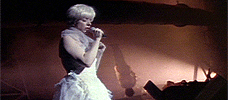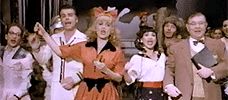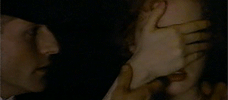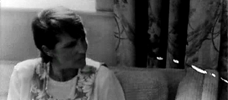Reviews
David Lynch & James Signorelli
USA, 1993
Credits
Review by Rumsey Taylor
Posted on 14 July 2010
Source DivX video
Categories David Lynch’s 1990s
For a millennium, the space for the hotel room existed, undefined. Mankind captured it, gave it shape, and passed through. And sometimes, in passing through, they found themselves brushing up against the secret names of truth.
Prefaced with the above narration, the eponymous location of David Lynch & Mark Frost’s fourth (and final) television series, Hotel Room, would be room number 603 in New York’s Railroad Hotel. The entire series is a mere three episodes, each an average of thirty minutes long, and based solely in room 603 and its adjoining hallway. Yet in spite of such abbreviation, Hotel Room comprises a narrative span of unexpected depth: each episode is set in a different year (1969, 1992, and 1936, respectively) and in its definitively brief run varies liberally between comedy, romance, and pathos.
Lynch directed two of the series’ episodes - neatly bookending the second, helmed by James Signorelli (an otherwise go-to director for Saturday Night Live) - and they are noteworthy as his first collaborations with author Barry Gifford. Lynch had adapted Gifford’s Wild at Heart three years prior, and the two would collaborate on Lost Highway four years hence. Of these joint efforts, their Hotel Room episodes are the most succinct and least outlandish. Lynch, it seems, is orbiting around Gifford in these instances, and vice-versa: the surrealism is restrained in a manner that resembles Hemingway minimalism (much of the action in each episode is extrapolated in dialogue), and Gifford’s pulp fiction is isolated to a single room, foregoing any propensity for road trip or rampage.
The opener, “Tricks,” features Lynch regular Harry Dean Stanton assuming his trademark character type, a sort of drifter prone to being down on his luck. He arrives with a prostitute, nervously tests the responsiveness of the mattress, walks in and out of the bathroom in a single motion, and promptly stipulates bourbon (“No, not whiskey!â€) from room service. Stanton’s an actor whose face - relaying such experienced regret - is integral in establishing the spectrum of his characters, a physical trait he ballasts in subdued dialogical exchanges and considered bursts of emotion. His luck, or lack thereof, is retained by the episode’s end, but it is only at this moment that the viewer fathoms the extent of his desperation.
The second episode, “Getting Rid of Bobby,” is both the darkest and most comedic of the three. It centers on a volatile couple, played by Deborah Kara Unger (three years prior to her stalwart turn in Crash) and Griffin Dunne. Each seems to have some conception of how to handle the other: Dunne delivers his imperative to break up with considered indifference; Unger, dissatisfied with this expected but nonetheless sudden confrontation, reciprocates in whacking his head with a brass fire poker.
Lynch and Gifford are reinstated in the final and effectively strongest episode of the series, “Blackout.” (This episode is notably fifteen minutes longer than the preceding two.) It occurs in near total darkness, save for lamps that illuminate the characters’ faces in closeup and occasional flashes of lightning. Room 603 has welcomed another couple, this time a young one: she is apparently blind, and suffering from an acute fever; he is responsibly attendant, holding her hand calmly, looking unremittingly into her face even though she does not see him. The male is portrayed by Crispin Glover, who, like Stanton, is at home in a David Lynch production, but the standout here is Alicia Witt. She lends the circumstances a certain gothicism—her eyes, open wide and jerking suddenly in some direction toward an unseen spook, render her a beguiling gargoyle. This couple, we learn, are already enduring a tragedy that occurred in the years past, and we sense that they are on the verge of another.
Hotel Room remains slight in Lynch’s career, given how pronounced endorsements for his feature work tend to be, but it demonstrates how well he works within constraints. And furthermore, it has really no lulls whatsoever; if anything, it’s too condensed and too concentrated, and absent of any of Lynch’s signature concoctions of imagery. But if this is placed at or near the bottom of Lynch’s total body of work, then it more than suffices in demonstrating just how strong the sum of all of it is.
More David Lynch’s 1990s
-

Industrial Symphony No. 1
1990 -

On the Air
1992 -

Hotel Room
1993 -

Premonitions Following an Evil Deed
1995 -

Lost Highway
1997
We don’t do comments anymore, but you may contact us here or find us on Twitter or Facebook.



